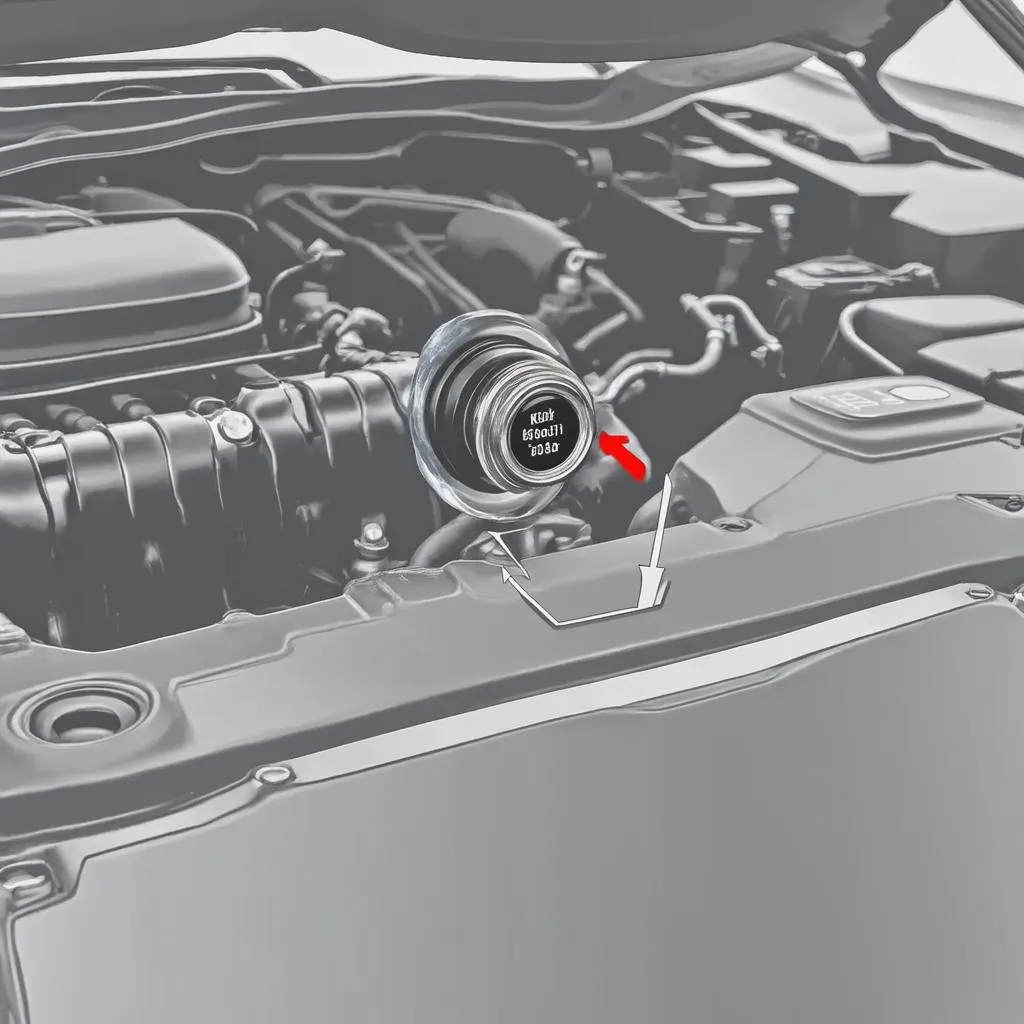VCDS Knock Sensor Test: A Comprehensive Guide for European Car Owners
“A car is like a human body. It needs regular checkups to ensure it runs smoothly and efficiently.” This proverb reflects the importance of regular car maintenance, and a vital component of this maintenance is checking the knock sensor. A knock sensor is a crucial part of your car’s engine management system, detecting knocking or detonation that can damage the engine.
Understanding the Significance of Knock Sensor Testing
What is a knock sensor? A knock sensor is a small, piezoelectric device typically located on the engine block. It senses vibrations caused by abnormal combustion in the cylinders, a phenomenon known as knocking or detonation.
Why is knock sensor testing important? A healthy knock sensor plays a crucial role in:
- Preventing Engine Damage: Detonation can cause significant engine damage if left unchecked. The knock sensor alerts the engine control unit (ECU) to adjust the timing and fuel mixture, preventing further damage.
- Optimizing Engine Performance: A faulty knock sensor can cause engine misfires, reduced power, and poor fuel efficiency. Regular testing ensures the sensor is functioning correctly and optimizes engine performance.
- Identifying Potential Issues Early: Detecting a faulty knock sensor early allows for timely repairs, preventing more extensive and costly issues in the future.
VCDS: Your Gateway to Knock Sensor Testing
VCDS, or VAG-COM, is a diagnostic tool specifically designed for Volkswagen, Audi, Skoda, and Seat vehicles. This powerful tool grants you access to various functionalities, including:
- Reading and clearing fault codes: Identify potential issues and pinpoint the cause of problems.
- Accessing live data: Monitor real-time engine parameters and performance data, including knock sensor readings.
- Performing adaptations and coding: Adjust specific settings and functionalities within the vehicle’s ECU.
How to Perform a VCDS Knock Sensor Test: A Step-by-Step Guide
Step 1: Connect VCDS to Your Vehicle
- Ensure your VCDS cable is properly connected to your vehicle’s OBD-II port.
- Launch the VCDS software on your computer.
Step 2: Select the Correct Control Module
- Navigate to the “Engine” control module (01). This module houses the data related to the engine’s performance and sensors.
Step 3: Access Live Data
- Go to “Measurement Blocks” (08).
- Choose a block that displays the knock sensor readings.
- The specific block number may vary depending on your car model and engine type.
Step 4: Analyze the Readings
- Observe the knock sensor readings while the engine is running.
- A healthy knock sensor should display minimal activity unless the engine experiences knocking.
- Excessive activity or erratic readings indicate a potential issue with the knock sensor.
Step 5: Test Knock Sensor Activity
- Perform a “knock test” by revving the engine slightly.
- Watch for a spike in the knock sensor readings.
- A sudden and significant increase in the readings confirms the sensor is functioning correctly.
Step 6: Troubleshoot and Resolve Issues
- If you suspect a faulty knock sensor, consult a qualified mechanic or use resources like cardiagxpert.com to understand the next steps.
- Remember: Never attempt to diagnose or repair electrical systems without proper knowledge and training.
Interpreting the Results: A Deeper Dive into Knock Sensor Data
Understanding knock sensor data is crucial for accurate diagnosis. Here’s what to look for:
- Consistent high readings: This could indicate excessive engine knocking or a faulty knock sensor.
- Erratic readings: This may point to a loose connection, faulty wiring, or a malfunctioning knock sensor.
- No readings: This suggests a problem with the sensor or its electrical connections.
Common Questions Regarding VCDS Knock Sensor Tests
Many car owners have questions about knock sensor tests:
- “Can I perform this test myself?” While the steps are relatively straightforward, it’s always best to consult a mechanic for accurate diagnosis and repair.
- “What if my car model doesn’t have a knock sensor?” Newer models often use other methods for knock detection, but the VCDS tool can provide valuable insights into other engine-related parameters.
- “Can I fix a faulty knock sensor myself?” Replacing a knock sensor typically requires specific tools and knowledge. Consulting a professional is recommended for safe and effective repair.
Enhance Your VCDS Skills: Explore More Diagnostics
Want to delve deeper into VCDS diagnostics? Explore these resources:
- VCDS Sensor Test: Learn about different sensor tests you can perform with VCDS.
- VCDS Ethanol Content: Discover how to monitor ethanol content in your fuel using VCDS.
- Verificare Presiune Ulei VCDS: Learn how to check your oil pressure using VCDS.
Conclusion: Empowering You to Maintain Your European Vehicle
The Vcds Knock Sensor Test is a powerful tool for maintaining your European vehicle. By understanding the process and interpreting the data, you can detect potential problems early, optimize engine performance, and prevent costly repairs.
Remember, regular maintenance is key to keeping your car running smoothly. Consult a qualified mechanic or explore resources like cardiagxpert.com for any questions or assistance.
Looking for expert help with diagnostics?
Contact us via Whatsapp: +84767531508 for immediate support. Our team of automotive specialists is available 24/7 to assist you with your vehicle needs.
 VCDS Knock Sensor Test
VCDS Knock Sensor Test
 Knock Sensor Diagram
Knock Sensor Diagram
